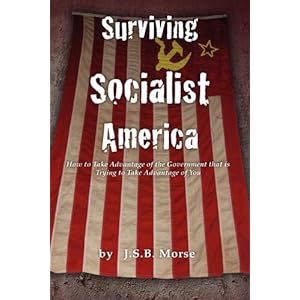- December 5, 2011
- Posted by: Code Interactive
- Category: Uncategorized
Bob needs some stuff, so he goes to his local Wal-Mart and buys what he wants and needs. Much of that money that Bob spends goes to pay for more products that other people want and need, produced by hundreds of thousands of companies with workers all trying to create something of value. Some of Bob’s money goes to the operational costs of the Wal-Mart store like property expenses and energy to keep the big box lighted. A good deal of Bob’s money goes to the employees of Wal-Mart, a few of which (like the President and CEO Michael Duke) make millions of dollars a year, while the majority of compensation goes to the over two million people that Wal-Mart employs, all of which make more than minimum wage, but which range in salary from $8.50 an hour to $125,000 a year. Some of Bob’s money goes to charitable foundations that Wal-Mart has founded or supports, beneficiaries of which include students, female entrepreneurs, and the hungry. The rest of Bob’s money goes to the millions of shareholders who own stock in Wal-Mart through bi-monthly dividends.
But Bob isn’t loaded. He has to work for a living—going into his office from 8-5 every day and receiving a paycheck every other week. But Bob doesn’t receive all that he’s earned. A sizable amount is taken out of his check before Bob can think about spending it and goes to the federal government. The federal government gets revenue from several different forms of taxation, but the two largest come from Bob’s paycheck—the income tax and the Social Security tax. This money is mixed with money from loans that the government gets from investors (Treasury Bonds) and is primarily redistributed to recipients of social welfare programs (what the government calls mandatory spending): Social Security, Medicare, Medicaid, and Unemployment. These programs account for over $2 trillion of federal spending, most of which gets to the hands of the intended recipient (upwards of 20 percent is lost in administrative costs, much of which goes toward the salaries and benefits of the nearly two million federal civilian employees). When you add the cost of national debt, mandatory spending nears $2.4 trillion. The rest of Bob’s money goes to what’s termed “Discretionary Spending,” which include defense, housing and education programs, and a litany of some 10,000 federal agencies, departments, or grant recipients.
 What you have here is a brief description of the two economies we have today: the free-market economy and the socialist one. Both redistribute wealth from Bob to others (both wealthy and needy). Both employ people and provide products and services that consumers rely on. But there’s one significant difference between the two economies: the former is a completely voluntary system and the latter is based completely coercion. That is, when people send their money to Wal-Mart and, consequently, all the subsidiary economic channels, they are doing so voluntarily. When people send their money to the government, it is because they have been threatened with imprisonment to do so. The result of this difference is clear. While the private sector is efficient and effective, the federal government is bloated and wasteful. Federal employees make on average anywhere from 22-50 percent more than private sector workers in similar fields. And the money spent is ineffective. Federal programs like Medicare, Housing and Urban Development, and to some extent, Defense are designed for failure because there is no incentive if they succeed. If those in charge win the war on poverty or the war on terror, then they lose their funding. Conversely (and perversely), if a given government plan fails, it isn’t discontinued, it is rewarded with more funding. The government can do this because it supposedly has the authority to take as much money as it wants to pay for whatever wars (whether military or otherwise) it deems beneficial to the general welfare.
What you have here is a brief description of the two economies we have today: the free-market economy and the socialist one. Both redistribute wealth from Bob to others (both wealthy and needy). Both employ people and provide products and services that consumers rely on. But there’s one significant difference between the two economies: the former is a completely voluntary system and the latter is based completely coercion. That is, when people send their money to Wal-Mart and, consequently, all the subsidiary economic channels, they are doing so voluntarily. When people send their money to the government, it is because they have been threatened with imprisonment to do so. The result of this difference is clear. While the private sector is efficient and effective, the federal government is bloated and wasteful. Federal employees make on average anywhere from 22-50 percent more than private sector workers in similar fields. And the money spent is ineffective. Federal programs like Medicare, Housing and Urban Development, and to some extent, Defense are designed for failure because there is no incentive if they succeed. If those in charge win the war on poverty or the war on terror, then they lose their funding. Conversely (and perversely), if a given government plan fails, it isn’t discontinued, it is rewarded with more funding. The government can do this because it supposedly has the authority to take as much money as it wants to pay for whatever wars (whether military or otherwise) it deems beneficial to the general welfare.
Give an organization the authority to fund itself regardless of the outcome and you will get corruption at its worst. The problem with the federal government isn’t all the goodies they provide for all the needy people, it’s that they steal to pay for those goodies. If they had to work at it like a company or a private charity, the country would be a infinitely better place.
For more common sense, check out:


